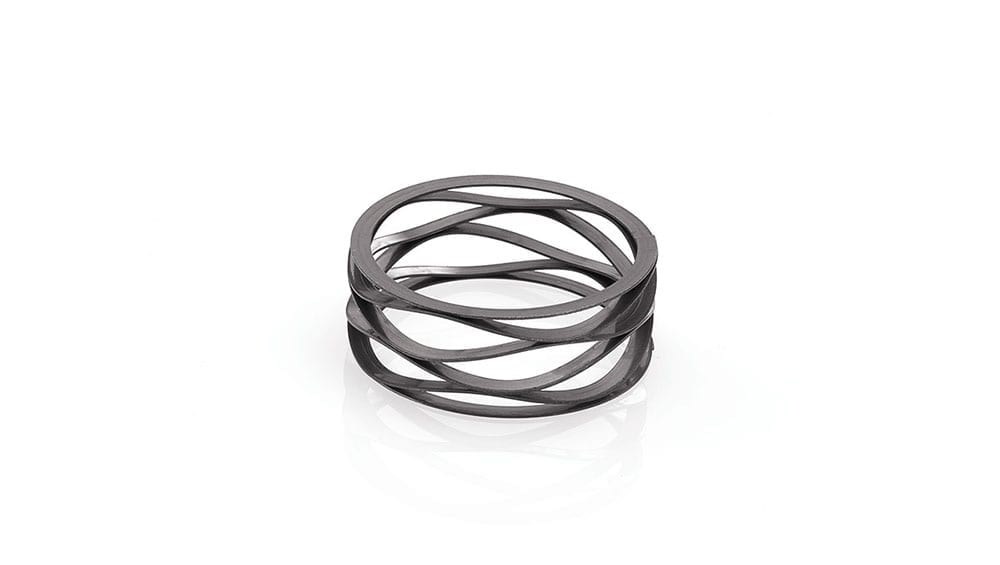
If your application requires high forces but the space for deflections is relatively small, wave springs are very often the best – and sometimes the only – alternative. Speaking examples are roller bearings and sealings between a housing and a rotating shaft.
Wave spring belong to the group compression springs, which means that the displacement is linear and that length decreases with increasing force. Their geometry is in a way similar to helical compression springs, but with the major difference that a wave shape is added to the linearly increasing axial position of the material. It is always made from flat rolled wire, with the largest cross section dimension (width) in the radial direction of the spring.
High forces, small deflection
The geometry and characteristics of a wave spring makes them perfectly suited to be assembled in a space that is very limited in the radial direction. We say that the diameter ratio (outer diameter / inner diameter) is close to one. A conventional helical compression spring will not be able to give much force in such a geometry and a disc spring requires higher diameter ratios. Other signs of that a wave spring should be considered is if forces are high and deflection relatively small. A wave spring can achieve such characteristics in a smaller axial space than other spring types. This is partly because wave springs often can be made without dead coils in the ends of the spring, that a helical compression spring needs.
Perfect for roller bearing applications
A typical application where these requirements exist is to apply a preload to a roller bearing, whose performance is improved by an axial preload. Noise is reduced, bearing stiffness is increased and lifetime of the bearing increases if it is preloaded with the correct force. Preloading can be applied without a spring, but the flexibility of a spring element compensates for tolerances in axial direction and keeps the preload force within the desired range independent of tolerance outcome. Also, the effects of thermal expansions are reduced by the use of a spring element. The assembly space for roller bearing preload applications is perfect for wave springs.
Space effective in sealings
Another application with similar requirements is sealings, typically between a housing and a rotating shaft. The sealing elements need to be axially preloaded for proper function and a flexible spring element has the same advantages here as in the roller bearing application. The assembly space is similar as for roller bearings and the wave spring is just as space effective here.
Always consider wave springs if diameter ratio is small
Those are the two most common applications for wave springs but remember; everywhere where the diameter ratio is small, wave springs should be considered. If forces are high and deflections relatively small, they are very often the best – and sometimes the only – alternative.
Anna-Karin Sandell
Marketing & PR
anna-karin.sandell@lesjoforsab.com
+46 70 747 46 18
The Lesjöfors Group provides the widest range of springs and pressings to customers in diverse industries across the world. With a unique expertise in high technological, custom-made solutions and a flexible manufacturing capacity, Lesjöfors is the premier partner for all spring requirements. Lesjöfors, owned by Beijer Alma a listed company on the Stockholm Stock Exchange, comprises almost 50 manufacturing and sales companies in many countries. As a long-term and committed spring innovator, the Group continuously grows with a good profitability, both organically and by acquisitions.
